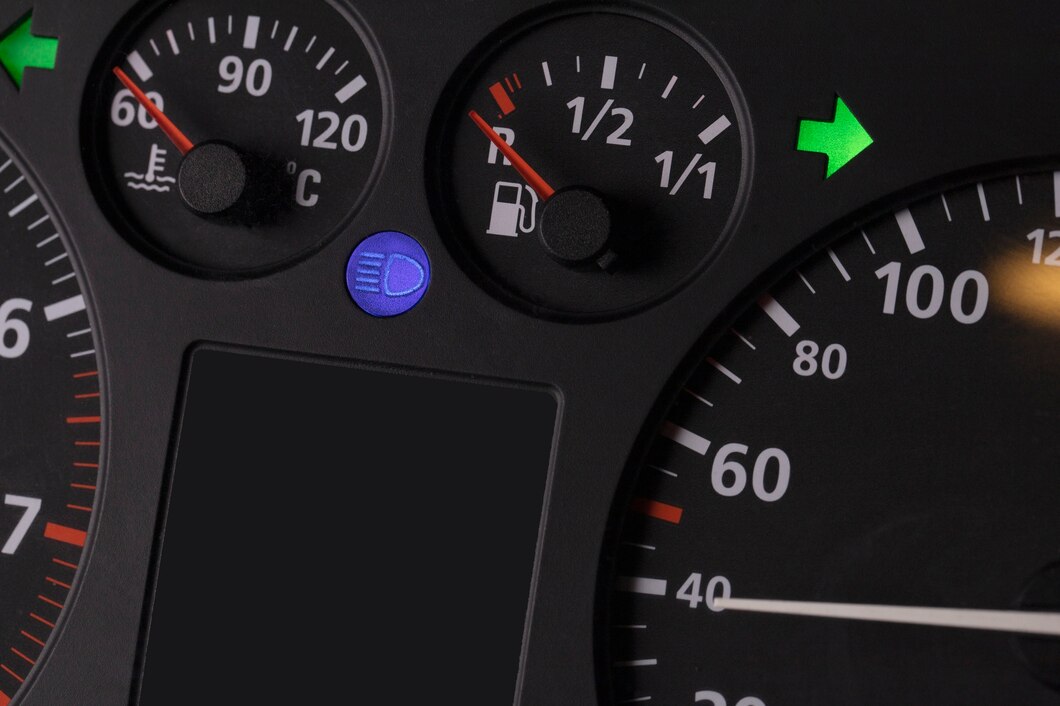Maintaining your vehicle’s health is paramount to ensuring its longevity and performance. One of the most crucial aspects of this maintenance is keeping an eye on your car’s coolant level. Coolant, or antifreeze, plays a vital role in regulating your engine’s temperature, preventing it from overheating in the summer and freezing in the winter. Recognizing the early signs that your coolant level is critical can save you from expensive repairs and dangerous breakdowns.
1. Rising Engine Temperature Gauge
The most immediate indicator of a low coolant level is the engine temperature gauge. Typically located on the dashboard, this gauge monitors your engine’s heat. If you notice the needle creeping toward the red zone, it’s a clear sign that your engine is running hotter than usual. This can happen because there isn’t enough coolant circulating to dissipate the engine’s heat.
2. Coolant Warning Light
Modern vehicles are equipped with a variety of sensors and warning systems. One such system is the coolant warning light, which is designed to alert you when your coolant level is low. If this light illuminates on your dashboard, it’s crucial to check your coolant level immediately. Ignoring this warning can lead to severe engine damage.
3. Frequent Overheating
If your car frequently overheats, even after short trips, this is a strong indication that your coolant level might be critically low. Overheating can cause serious damage to your engine, including warped heads and blown gaskets, so it’s essential to address this issue promptly.
4. Sweet Smell from the Engine
Coolant has a distinctive sweet smell due to its ethylene glycol content. If you detect a sweet aroma coming from your engine bay, it could indicate a coolant leak. This leak could lead to a gradual decrease in coolant levels, ultimately causing your engine to overheat.
5. Visible Coolant Leaks
Visible coolant leaks are a clear sign that your vehicle’s coolant level is dropping. These leaks can often be spotted under the car, near the front. Coolant is typically green, orange, or pink, and it leaves a noticeable residue. If you notice puddles of liquid with these colors, it’s essential to inspect your coolant system for leaks.
6. Poor Heater Performance
Your car’s heater relies on hot coolant to warm the air that gets blown into the cabin. If the heater is blowing cold air, even when the engine is warm, it might be because there isn’t enough coolant circulating through the heater core. This can be a sign of low coolant levels.
7. Steam from the Hood
Seeing steam rising from under your hood is an urgent warning sign that your engine is overheating, likely due to low coolant levels. This situation requires immediate attention, as continuing to drive can cause severe engine damage.
8. Unusual Engine Noises
A low coolant level can lead to unusual engine noises, such as a gurgling or bubbling sound. These noises occur because the coolant system is trying to circulate air pockets, which should not be present. This can also lead to uneven engine temperatures and potential overheating.
Preventive Measures
To prevent your coolant level from reaching a critical point, regular maintenance is key. Here are some tips:
- Regular Inspections: Check your coolant level regularly, especially before long trips. Ensure the coolant is between the minimum and maximum marks on the reservoir.
- Scheduled Maintenance: Follow your vehicle manufacturer’s recommended maintenance schedule, which includes coolant flushes and refills.
- Leak Repairs: Address any leaks immediately to prevent further coolant loss and potential engine damage.
Recognizing the early signs of a critical coolant level can save you from extensive engine damage and costly repairs. By staying vigilant and performing regular maintenance checks, you can ensure your car runs smoothly and efficiently, keeping you safe on the road. If you notice any of the warning signs mentioned above, take action immediately to address the issue and maintain your vehicle’s health.











